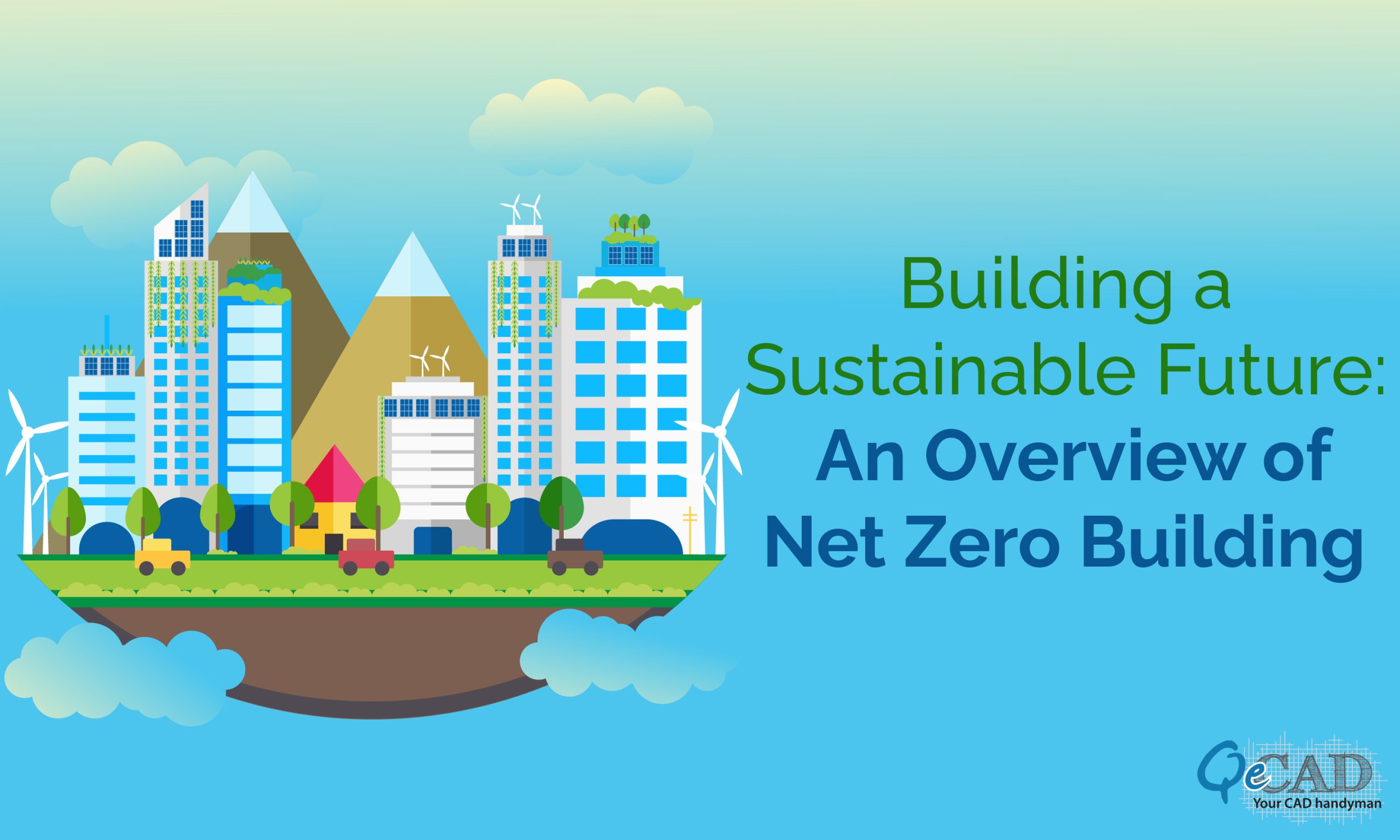
Introduction
A number of industries, notably the construction industry, are looking for strategies to lessen the environmental impact they have as climate change becomes a pressing issue. The idea of “Net Zero” represents a crucial method for minimizing the carbon footprint of structures. Having a special emphasis on the function of 6D BIM Services, we are going to explore what net zero buildings are and the manner in which they might be attained in the following piece.
Net Zero Buildings: What Are They?
A net zero building is one which generates equal amounts of green power throughout an entire year as it consumes. In a nutshell, their energy usage is zero net. Integrating energy-efficient practises alongside the use of energy from renewable sources, like solar or wind power, allows for that.
Buildings that have achieved net zero emissions may represent brand-new developments or older structures that have undergone net zero retrofits. Additionally, these could be either dwellings or business structures.
What Net Zero Buildings Offer
Buildings that are net zero have various advantages. Most importantly, these drastically lower a structure’s environmental impact. Buildings represent an important contributor to the emission of greenhouse gases, so lowering the amount of energy they consume may significantly assist with global warming mitigation.
Additionally, prospective energy cost savings are another benefit of net zero buildings. Although the initial expense associated with constructing or converting a net zero building might be more expensive than maintaining a normal structure, these expenditures could eventually be covered by the reduction in energy consumption.
Additionally, inhabitants of net zero buildings may enjoy cleaner and more welcoming interior spaces. These may enhance the condition of the indoor environment and minimize interior airborne contaminants by consuming less energy, which may enhance tenants’ well-being as well as their health.
How to Achieve Net Zero Buildings
Combining energy-saving techniques with the usage of renewable energy sources is necessary to achieve net zero buildings. Among the more effective methods for creating net zero buildings include those that are listed below:
1) Energy Efficiency Techniques:
Reducing energy usage via measures that improve energy efficiency is the initial stage in obtaining net zero buildings. They may involve taking steps like enhancing insulating material, replacing the glass with excellent energy performance, and employing efficient gadgets or lights.
2) Renewable Energy Resources:
Buildings are required to generate green power to balance away their energy use in order towards net zero. Installing photovoltaic cells, turbines for wind power, and other forms of clean energy may accomplish it.
3) Building Design:
Achieving net zero buildings requires careful consideration of building design. Energy usage can be influenced by the building’s introductions, the shape and location of its openings, including the installation of shade equipment.
4) Building Management:
Lastly, attaining net zero buildings requires competent building management. It might entail actions like keeping a watchful eye on the use of energy, improving building systems, and enlightening building inhabitants about ways to conserve energy.
The Importance of 6D BIM Services for Net-Zero Buildings
In order to achieve net zero buildings, 6D BIM (Building Information Modelling) services might prove extremely important. A 3D digital representation of a building can be created by architects, engineers, and professionals in the building sector using BIM, a digital modelling technology. By including energy performance metrics within the BIM model, 6D BIM Services bring that one step further.
Building experts may model the energy consumption of a structure when it is constructed by utilizing 6D BIM services, finding potential energy efficiency enhancements, or optimizing the design for energy consumption. By doing so, the building’s energy usage might be decreased while the effectiveness of renewable energy sources may improve.
Administrators may additionally track and enhance energy performance throughout the course using the structure’s lifespan with the aid of 6D BIM services. Management of buildings can find areas for energy conservation as well as enhance the efficiency of building systems by incorporating immediate information about building systems within the BIM model.
Conclusion
When attempting to achieve net zero buildings, an amalgamation of measures to improve energy efficiency, sources of renewable energy, good architectural choices, and effective construction oversight are needed. Net zero buildings represent an achievable approach for lowering the environmental impact of the construction industry.
By enabling building professionals to optimize building design or energy efficiency and assisting building managers with monitoring and optimizing energy performance during the entire lifespan of the facility, the utilization of 6D BIM services might play a crucial part in reaching net zero buildings. For the sector to mitigate the environmental harm it causes and advance an environmentally friendly future, the building sector needs to keep investigating and embrace solutions including net zero buildings while the importance of global warming grows.
